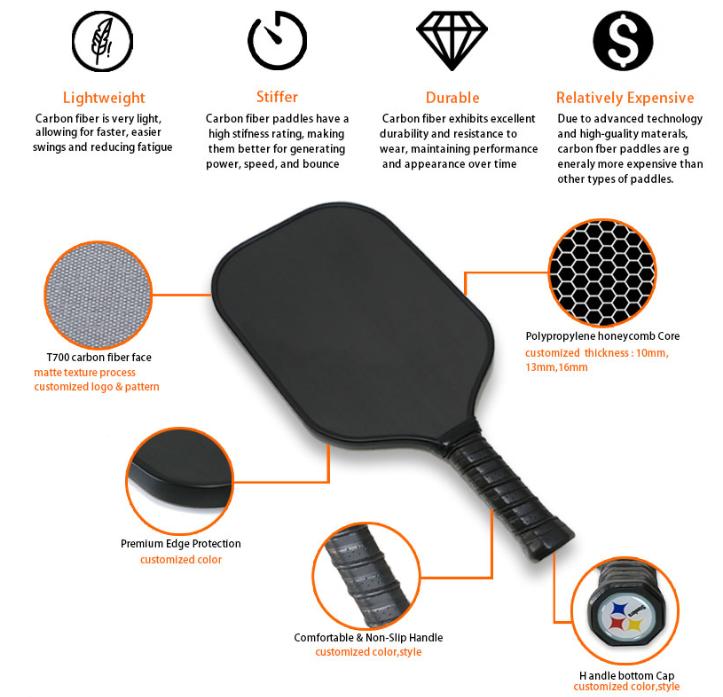- English
- Español
- Português
- русский
- Français
- 日本語
- Deutsch
- tiếng Việt
- Italiano
- Nederlands
- ภาษาไทย
- Polski
- 한국어
- Svenska
- magyar
- Malay
- বাংলা ভাষার
- Dansk
- Suomi
- हिन्दी
- Pilipino
- Türkçe
- Gaeilge
- العربية
- Indonesia
- Norsk
- تمل
- český
- ελληνικά
- український
- Javanese
- فارسی
- தமிழ்
- తెలుగు
- नेपाली
- Burmese
- български
- ລາວ
- Latine
- Қазақша
- Euskal
- Azərbaycan
- Slovenský jazyk
- Македонски
- Lietuvos
- Eesti Keel
- Română
- Slovenski
- मराठी
- Srpski језик
What is the difference between a graphite and composite pickleball paddle?
2023-04-01

When it comes to choosing a pickleball paddle, there are typically three main materials used: wood, composite, and graphite. While wooden paddles are often the least expensive, composite and graphite paddles are more popular among players due to their superior performance. In this article, we'll discuss the differences between graphite and composite pickleball paddles.
Material
The primary difference between graphite and composite paddles is the material used to create them. Graphite paddles are made from a single sheet of graphite or carbon fiber material, making them the lightest and most rigid option available. Composite paddles, on the other hand, are made from a blend of materials such as fiberglass, graphite, and polymer. These paddles are typically heavier than graphite but lighter than wooden paddles.
Weight
A paddle's weight can significantly impact your play style and performance on the court. Graphite paddles are the lightest option, weighing in between 6 and 8 ounces, while composite paddles weigh in between 7 and 10 ounces. As a result, graphite paddles are preferred by players who prioritize speed and agility, while composite paddles are often chosen by those who seek a balance between power and control.
Durability
Another key difference between graphite and composite paddles is durability. Graphite paddles are known for their exceptional strength and stiffness, meaning they are less likely to warp or break over time. Composite paddles, while still durable, may be more susceptible to damage from mis-hits or mishandling.
Price
Graphite paddles are generally more expensive than composite paddles due to the high cost of the materials used in production. Composite paddles are usually more affordable, although prices vary depending on the quality of the materials used.
Sweet Spot
Finally, the sweet spot of a paddle is another factor to consider when comparing graphite and composite options. The sweet spot refers to the area on the paddle that produces the most power and accuracy when hitting the ball. Graphite paddles generally have a smaller sweet spot, requiring more precise shots for optimal performance. Composite paddles usually have a larger sweet spot, providing a more forgiving experience for novice and intermediate players.
In conclusion, the primary differences between graphite and composite pickleball paddles are the material, weight, durability, price, and sweet spot size. Both materials offer unique advantages and disadvantages, so it's important to consider factors such as personal preference, skill level, and playing style when selecting the right paddle for you.





